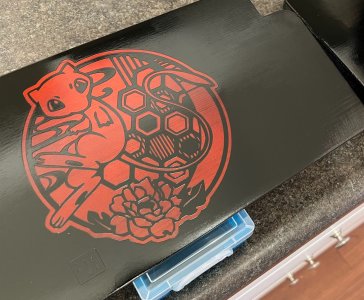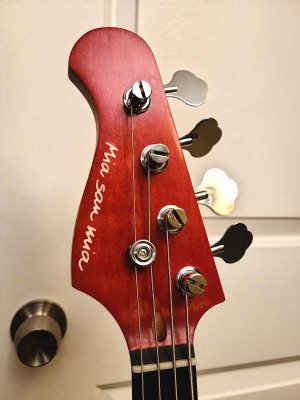This is an example of what I did a year ago. The motto of FC Bayern Munich was cut from Cricut vinyl, so it's pretty thick. After I applied it, I coated the headstock with a lot of lacquer. I think for the headstock alone, I went through almost an entire rattle can. If not the whole can, then a significant portion of it.
After probably about 5-6 coats, I'd gently sand down the coating on top of the vinyl itself, and I did wet-sand with 400. This was probably my 4th build, so my supply and equipment inventory wasn't as fully stocked as it is now. I wiped down with water to clean off debris and dried thoroughly and completely.
Then repeat with more lacquer, so that it would melt down and fill into the low spots (especially the voids inside the lettering). I kept this up until the build-up started to feel smooth to the touch. By the time I was near done, I could barely tell there was a raised surface there from the vinyl. But it was a lot of lacquer.




